Table of contents
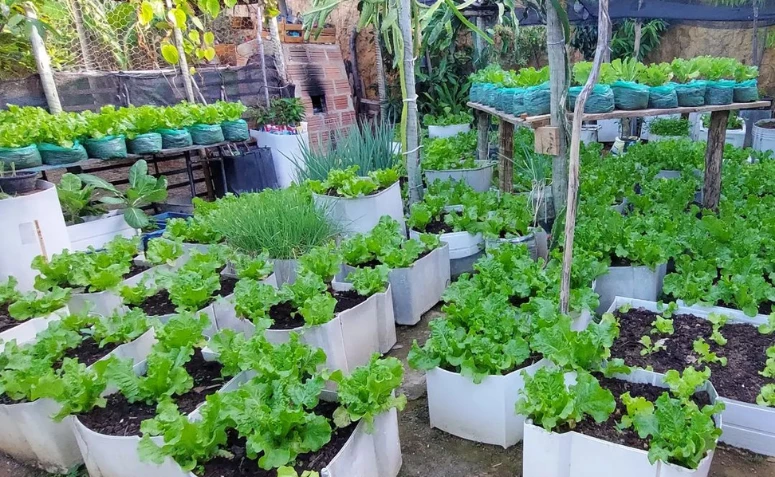
Growing a vegetable garden at home offers several advantages, as it is a pleasurable and extremely healthy activity. In addition, it is possible to plant vegetables, fruits, and spices of your taste and give a touch of beauty to your home.
How to make a vegetable garden at home
Regardless of the available space in your home, it is possible to set up a vegetable garden at a low cost and still enjoy the benefits that organic food provides, so check out the videos below and follow the step-by-step instructions:
Simple garden at home
- Demarcate the backyard area with wood to make the flowerbeds;
- Remove all stones from the soil, so as not to harm the rooting of the plants;
- Then sprinkle 100 g of virgin lime on the soil and some wood ash to regulate the pH;
- Mix black soil and poultry manure;
- Add the sand and mix again;
- After that, just plant the seedlings of the vegetables you want and don't forget to water them frequently.
The secret to having a home garden is to have a draining soil, rich in organic matter and with plenty of sunlight. This way, the growth of the plants is faster and healthier. Watch the video and learn how to make a simple garden in your backyard to enjoy fresh food!
Mini vegetable garden in the backyard
- Remove the weeds and clear the entire area;
- After that, loosen the soil with a squeegee and mix in manure;
- Then make the beds, leaving a space between them;
- Before planting the seeds, place them on a plate and mash them with the bottom of a cup;
- Make a line in the soil and leave a space of four fingers between each one. Then add the seeds and throw in the soil with your hands;
- For other seedlings, separate them and then make a hole in the soil.
- Finally, plant them in each hole and press lightly to firm them in the soil.
Want to make a mini vegetable garden at home? Watch this video with a simple and quick step by step how to plant coriander seeds and chive seedlings. See how easy it is!
Vegetable garden in the apartment
- Make several holes in the bottom of a pot, put expanded clay and a blanket on top for drainage;
- In a container with soil, mix some sawdust and dry leaves to make the substrate looser;
- Add the substrate to the pot and plant the vegetable seedlings, giving them room to grow;
- Finally, water your garden every day and keep the pot in a sunny spot.
Growing a vegetable garden in an apartment is possible, especially for growing spices such as cilantro, sausage, chives, and peppers in pots.
See_also: 20 crochet cup ideas to decorate your mealVertical garden at home
- First, measure and demarcate the wall for placing the angle brackets;
- Drill holes in the wall and insert plugs into each hole;
- Then screw the angle brackets to the wall and place the wood;
- Drill holes in the bottom of the planters for water drainage;
- After that, place stones or expanded clay and soil up to the middle of the planter;
- Add cattle or chicken manure and mix with your hands;
- Afterwards, plant the vegetable you wish;
- After that, place the planters on top of the wood and your vertical vegetable garden is ready.
In this video, you will follow the simple step by step instructions on how to make a vertical vegetable garden at home. To make it you will need two 3×30 cm pieces of wood, angle brackets, screws with dowels, drill and screwdriver. Prepare the necessary materials and get to work!
Pet Bottle Garden
- Use a piece of wire to make two hooks and attach them to the mouth of the bottle;
- Drill a hole in the bottom of the bottle to attach the other hook;
- With pliers, bend the ends of a 12-inch wire and attach it to the hooks;
- Then repeat the process with the other bottles and attach them to a corner bracket;
- With scissors cut off the center part of the bottle and fold down the sides;
- Below the center cut, drill a hole for water drainage;
- Fill the bottles with soil, make small holes, and plant the vegetable seedlings.
The pet bottle is a sustainable way to create various handicraft objects and has been widely used to grow plants, so watch the video and learn how to make a vertical vegetable garden that contributes to a more sustainable world.
See_also: 30 pictures of kitchen shelves that will organize your decorAs you can see, there are several possibilities to set up a home garden and enjoy all its benefits, right? See below what you can plant in your garden!
What to plant in a home garden
There is nothing like having fresh food at home, especially vegetables and spices to prepare that delicious dish for the family:

- Basil: Basil is an aromatic herb widely used in the preparation of various dishes such as pasta, sauces, meats, soups, and salads, and in the preparation of beverages such as teas and juices;
- Pepper: The pepper is a well-known spice among Brazilians and one of the most grown in home gardens. There are more than 25 types that can be planted in pots and vertical gardens. In other words, it is an option for those who don't have space for cultivation, as well as in apartments;
- Mint: The mint is an aromatic and very tasty herb used in the preparation of sweet and savory dishes, besides being very appreciated in teas, juices, and drinks. The plant can be grown in pots or beds, but it is important to have a fertile soil enriched with organic matter. Moreover, the mint needs a lot of light to grow, so always keep the pot in a place with good light;
- Coriander: This type of spice also grows well in pet bottles, being a sustainable option for small spaces. cilantro is easy to grow, all you have to do is pay attention to some factors, such as light, soil, and watering. the plant must be exposed to sunlight and the soil does not need much organic material. as for watering, it is important to keep the soil moist;
- Rosemary: The plant has a very pleasant aroma and can be used in gastronomy in several dishes or teas. To cultivate rosemary it is necessary to keep it daily in a place with at least 3 hours of direct sunlight and keep the soil always moist. However, when the herb is already developed it can withstand short periods of drought.
- Salsa: This herb can be grown both in more spacious places and in more restricted environments, such as flowerbeds, pots, or pet bottles. The seedlings are made from seeds that take 10 to 28 days to germinate. After that, it is essential that the seedlings get 1 to 2 hours of sunlight daily;
- Sage: To grow Salvia, the soil must be light, drained, and rich in organic compost. The herb can be planted in beds or planters, but needs full sun to thrive. However, it is necessary to control watering so that the roots do not rot, so water when the soil is dry;
- Oregano: Oregano gives an aromatic and spicy touch to several dishes, especially in pasta, sauces, and salads. The herb is easy to grow, but must be cultivated in drained soil and full sun.
- Thyme: Thyme, or pennyroyal, can be obtained from seeds or cuttings, i.e., it is an easy herb to grow. The plant can be grown in pots, but it must be placed in an area with plenty of sunlight;
- Chives: The chive is another very popular herb in Brazil, being used in sauteed dishes, salads, soups, among others. The plant grows well outdoors, but if you don't have much space, you can plant it in pots and leave them on a balcony with direct sunlight. As for watering, the soil needs to be moist, but not soaked. This way it will avoid root rot.
Now that you know what to plant in a home garden, here are some great ideas for making your own!
20 pictures of vegetable garden at home to make the most of every space
Making a home vegetable garden is not difficult and can be done in any corner, i.e. in the backyard, in flowerbeds or in pots, so check out the pictures below to get good ideas and make yours right now:
1. setting up a home garden is a pleasurable activity
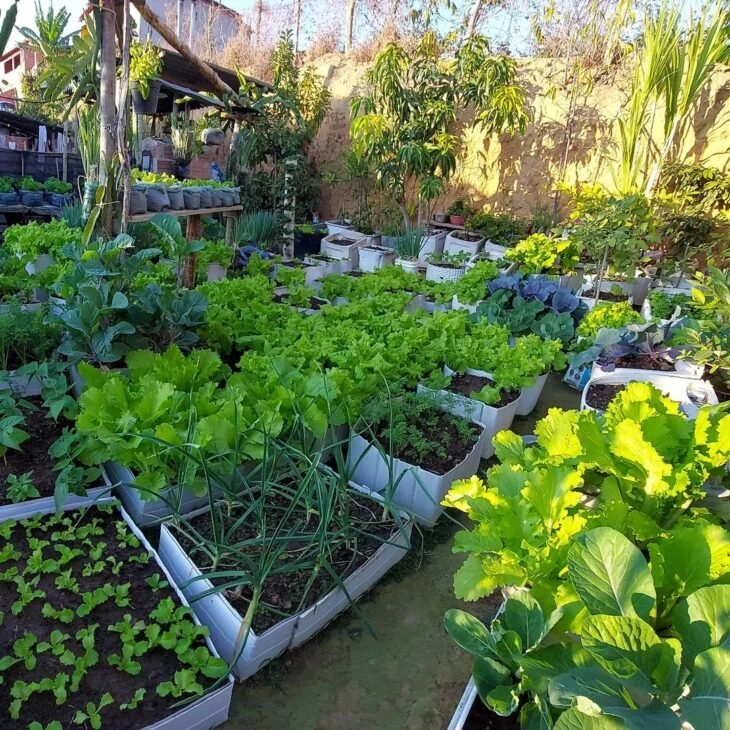
2. it is not only healthy to consume organic food
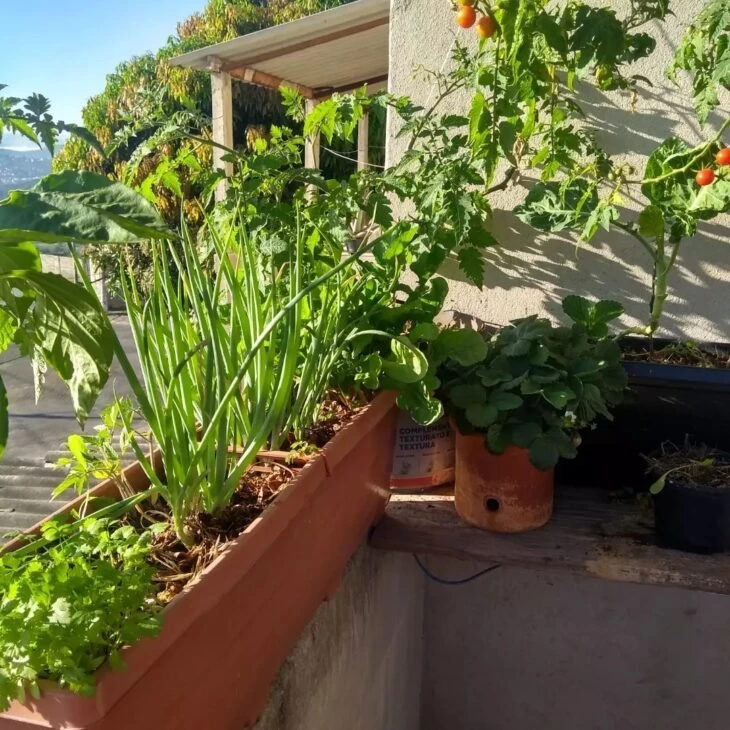
3. you can plant fruits, vegetables and spices
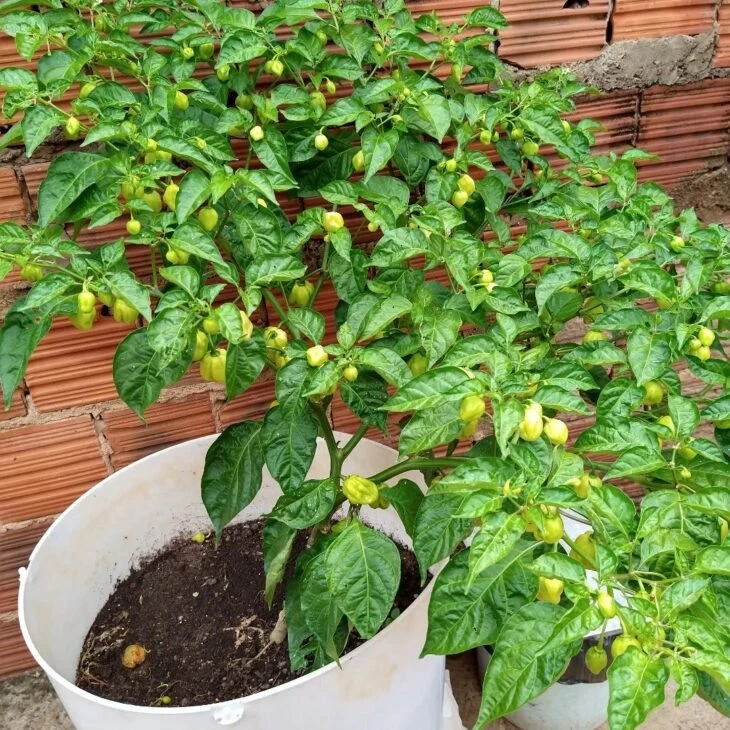
4. and you can use hanging vases
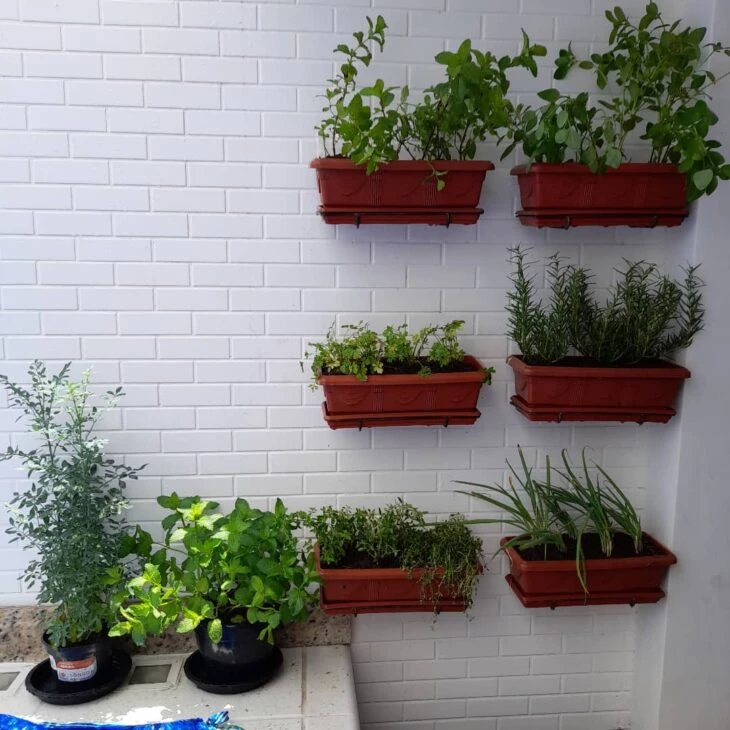
5. or make a small vegetable garden surrounded by wood

6. a hanging vegetable garden is an option for an apartment
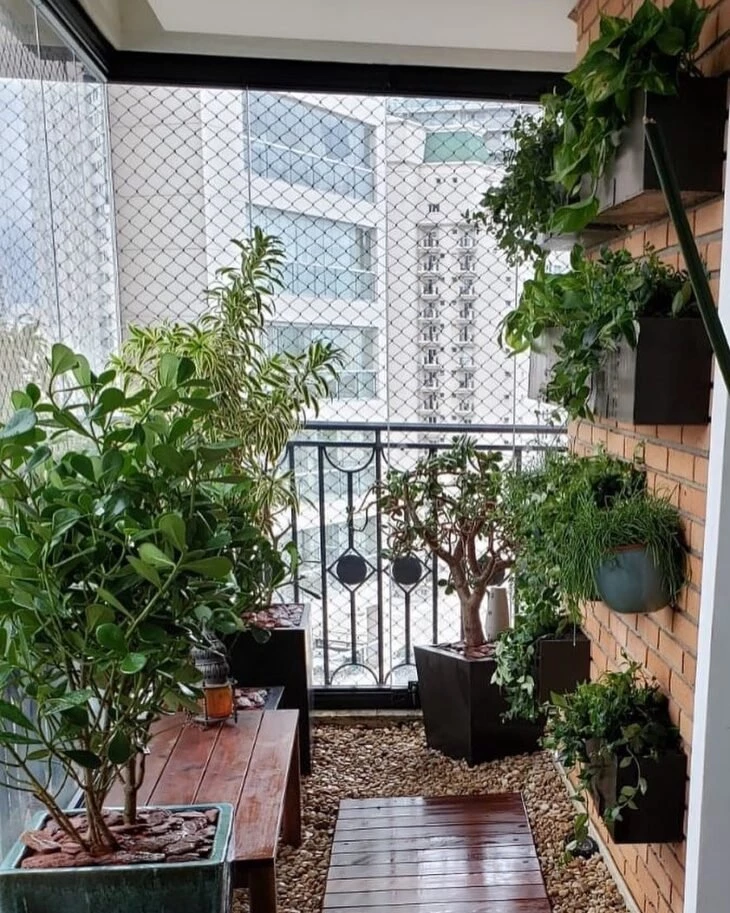
7. as well as planting spices in planters
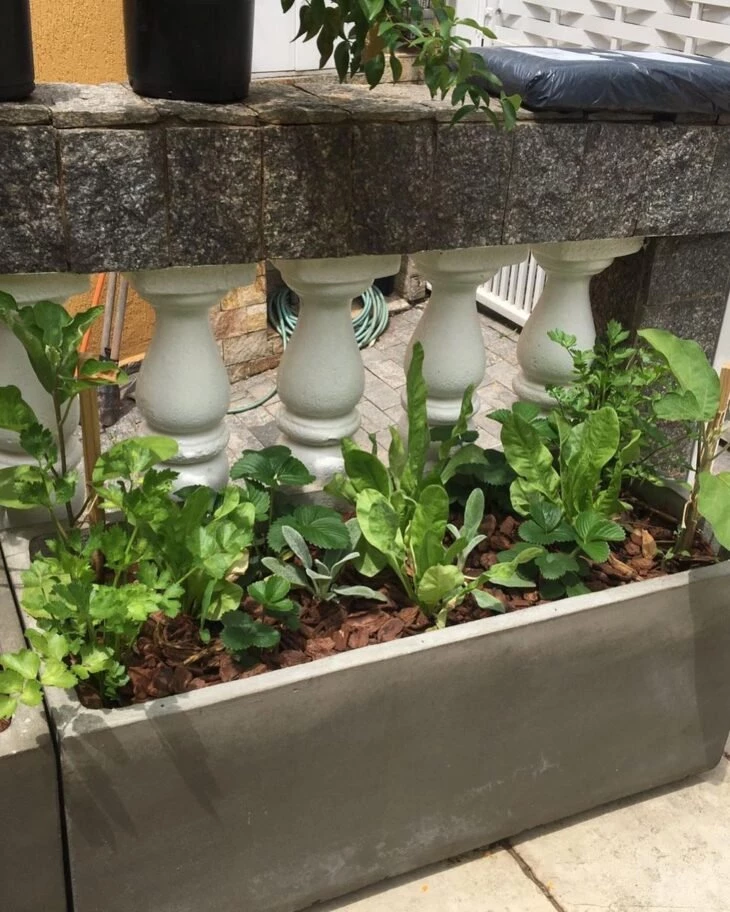
8. now, if you have space available, make a flowerbed
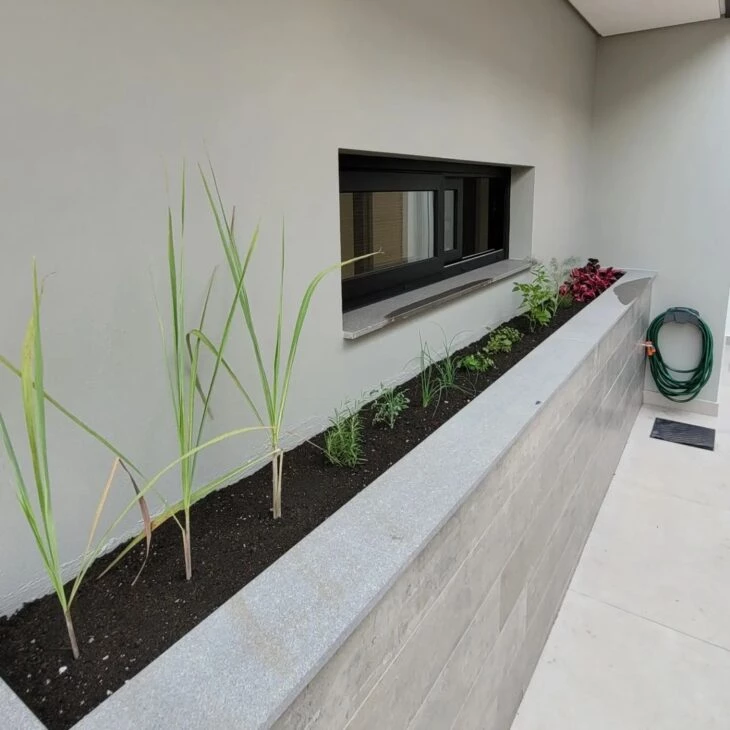
9. cans are recyclable options
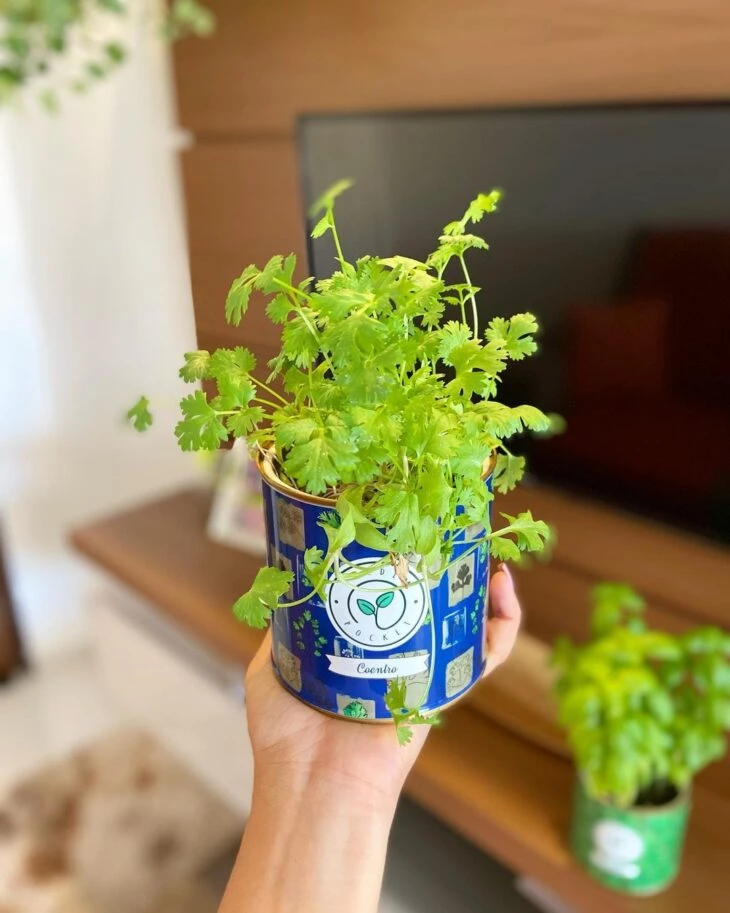
10. as well as plastic containers
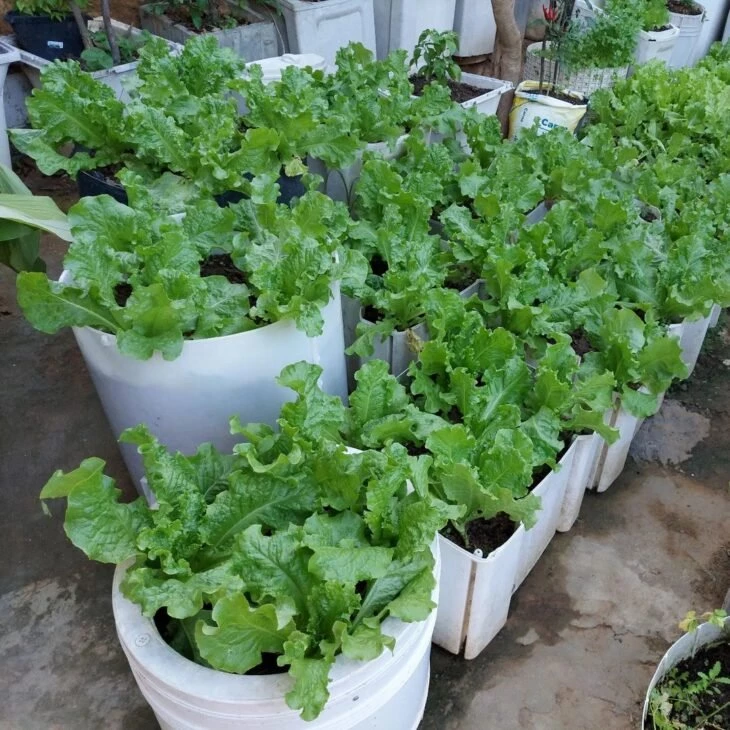
11. and the famous pet bottles
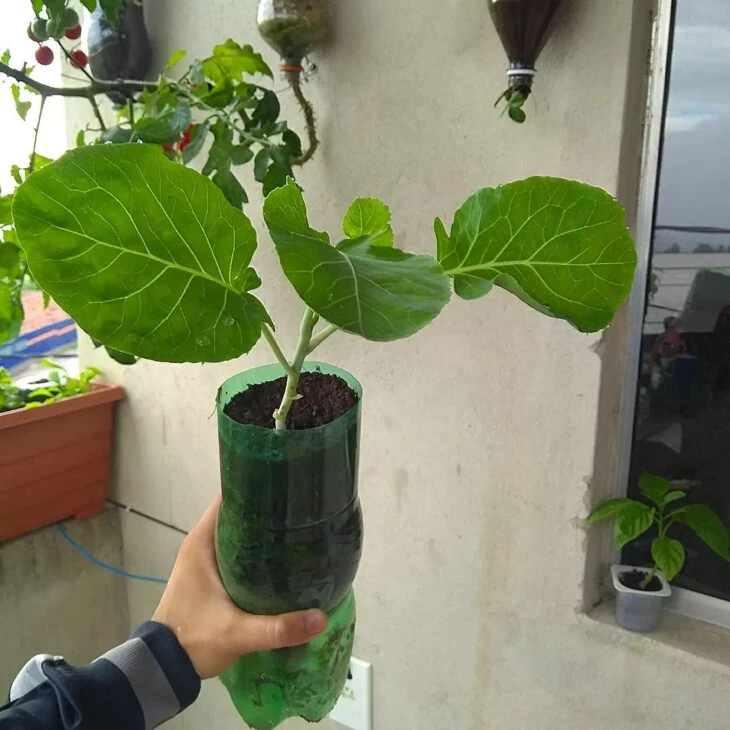
12. another option is to grow vegetables in pots
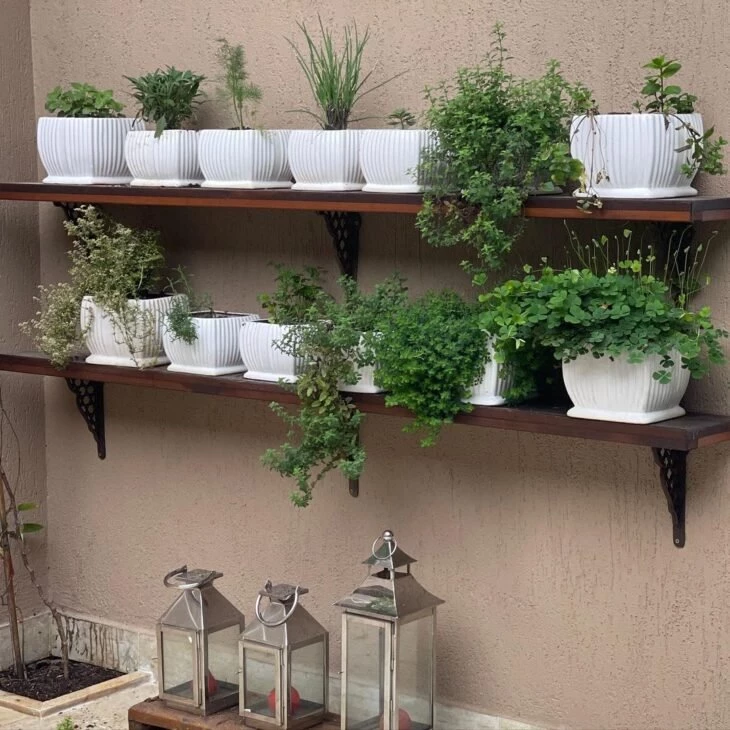
13. because they fit in any corner
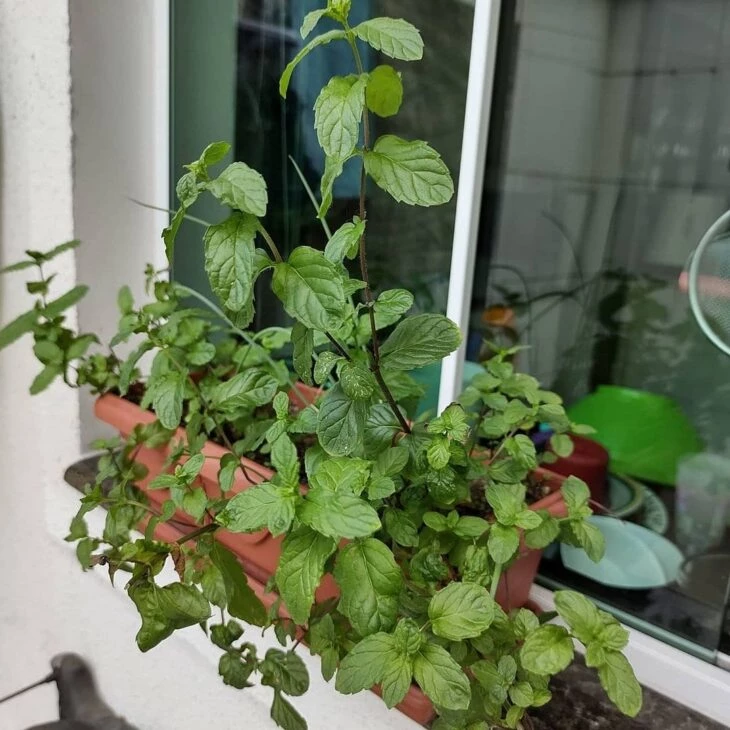
14. and grow just as healthy when planted in soil

15. there is no reason not to have a vegetable garden at home
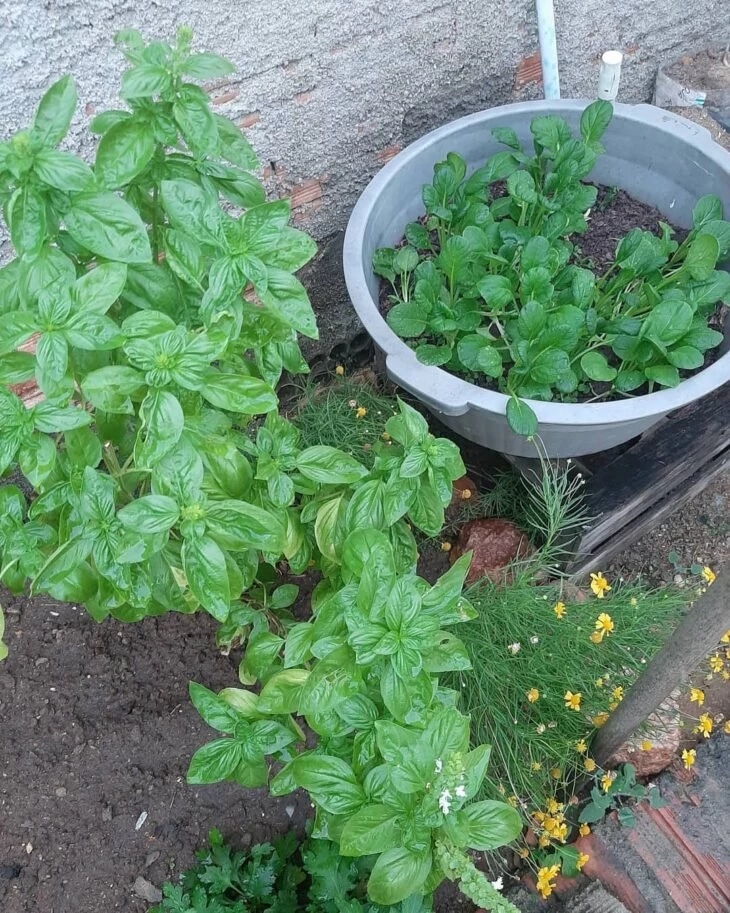
16. you can take advantage of every space
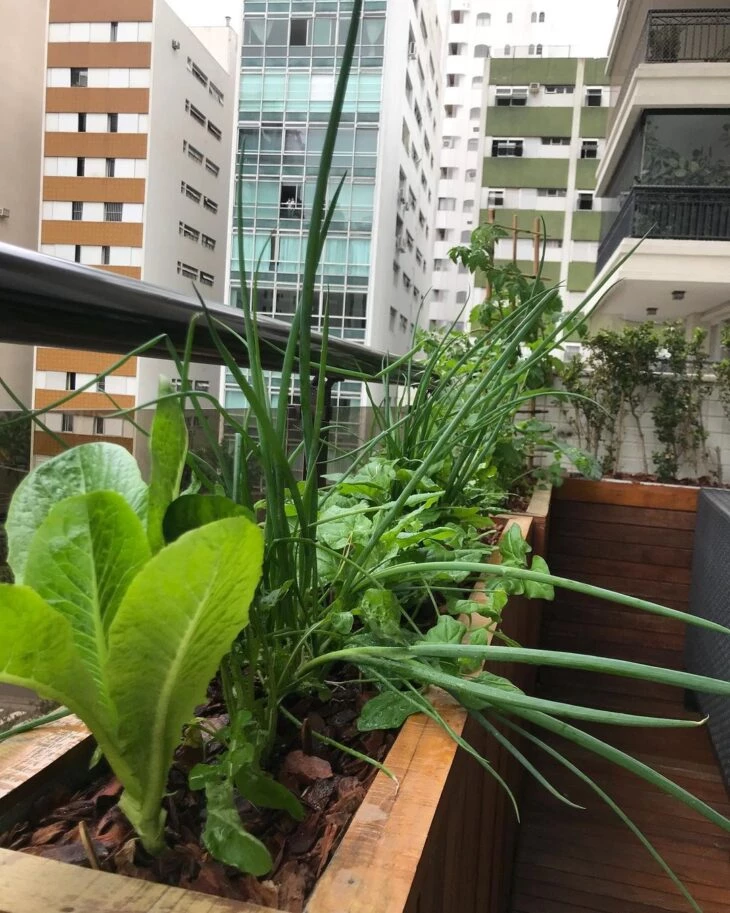
17. even though we don't have such a spacious backyard
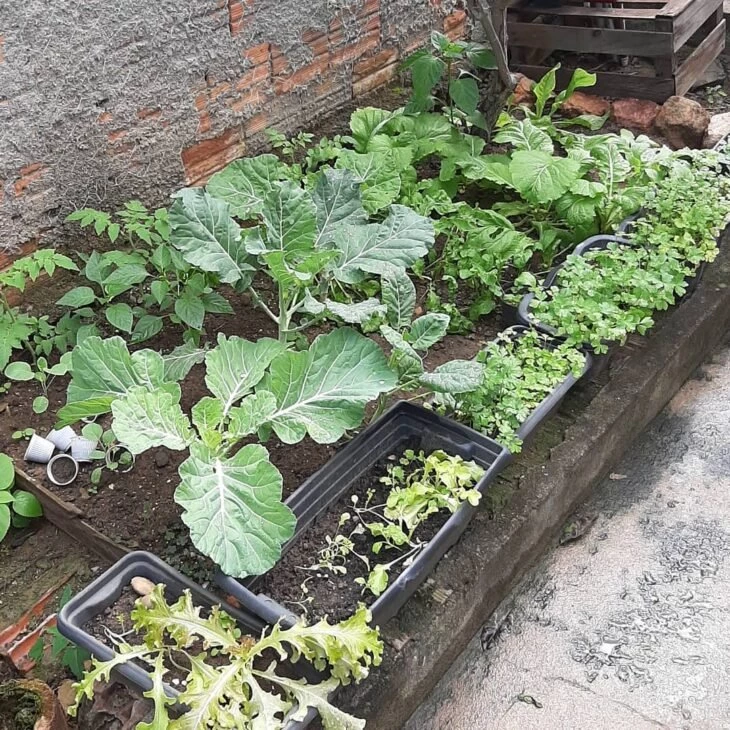
18. it is possible to make a vertical vegetable garden
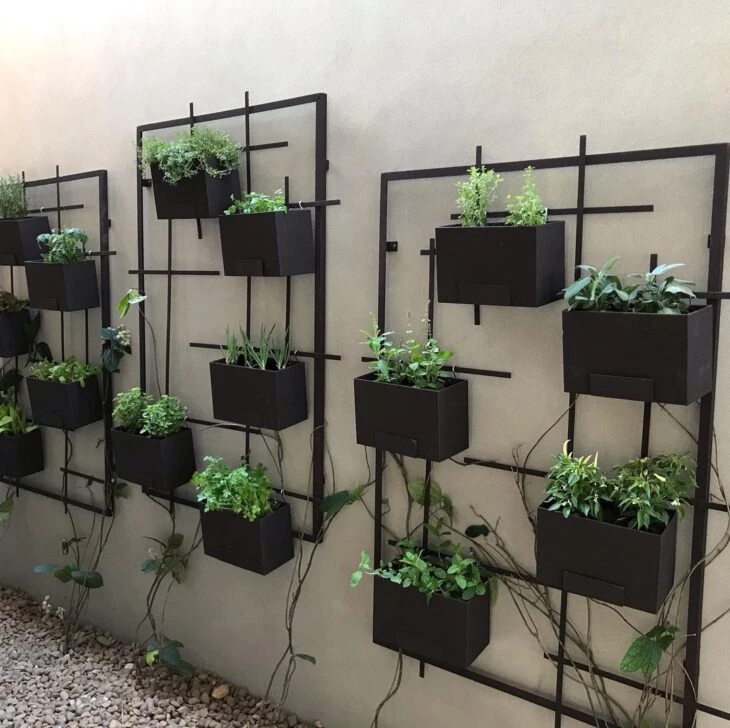
19. just use your creativity
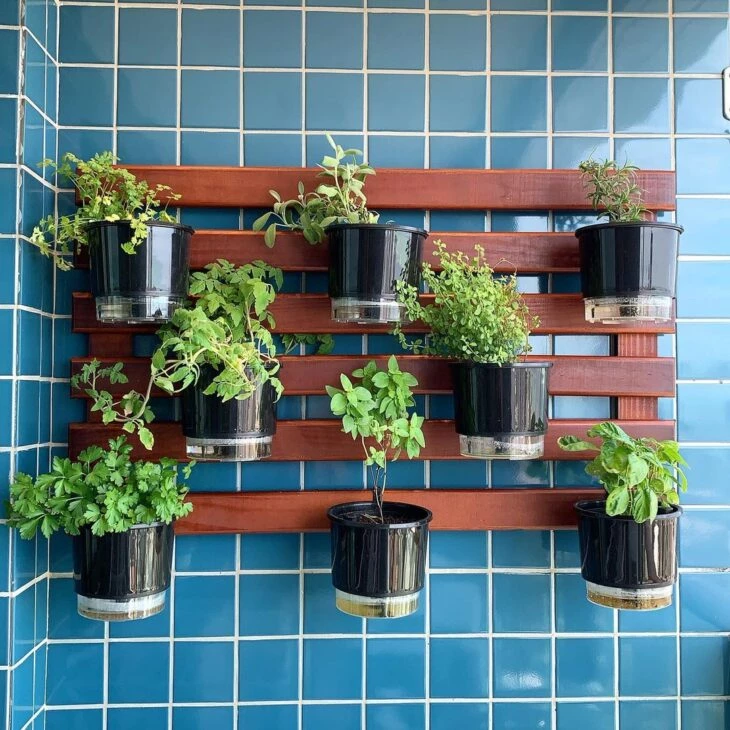
20. and set up a home garden for healthier living!
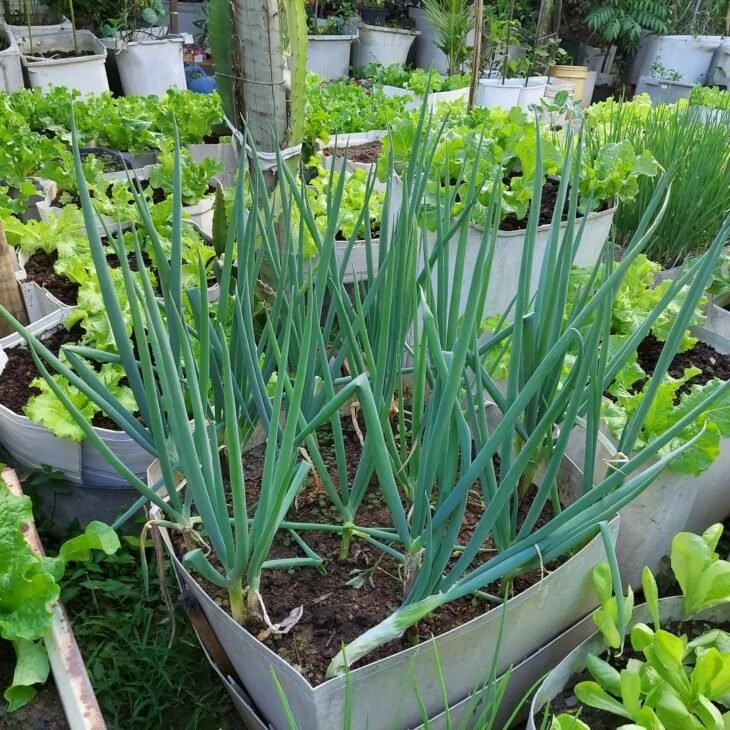
Now that you know how to grow a vegetable garden at home, all you have to do is choose what to plant and start growing it. Take advantage and check out the pet bottle craft ideas to add a special and sustainable touch to your home decor!


